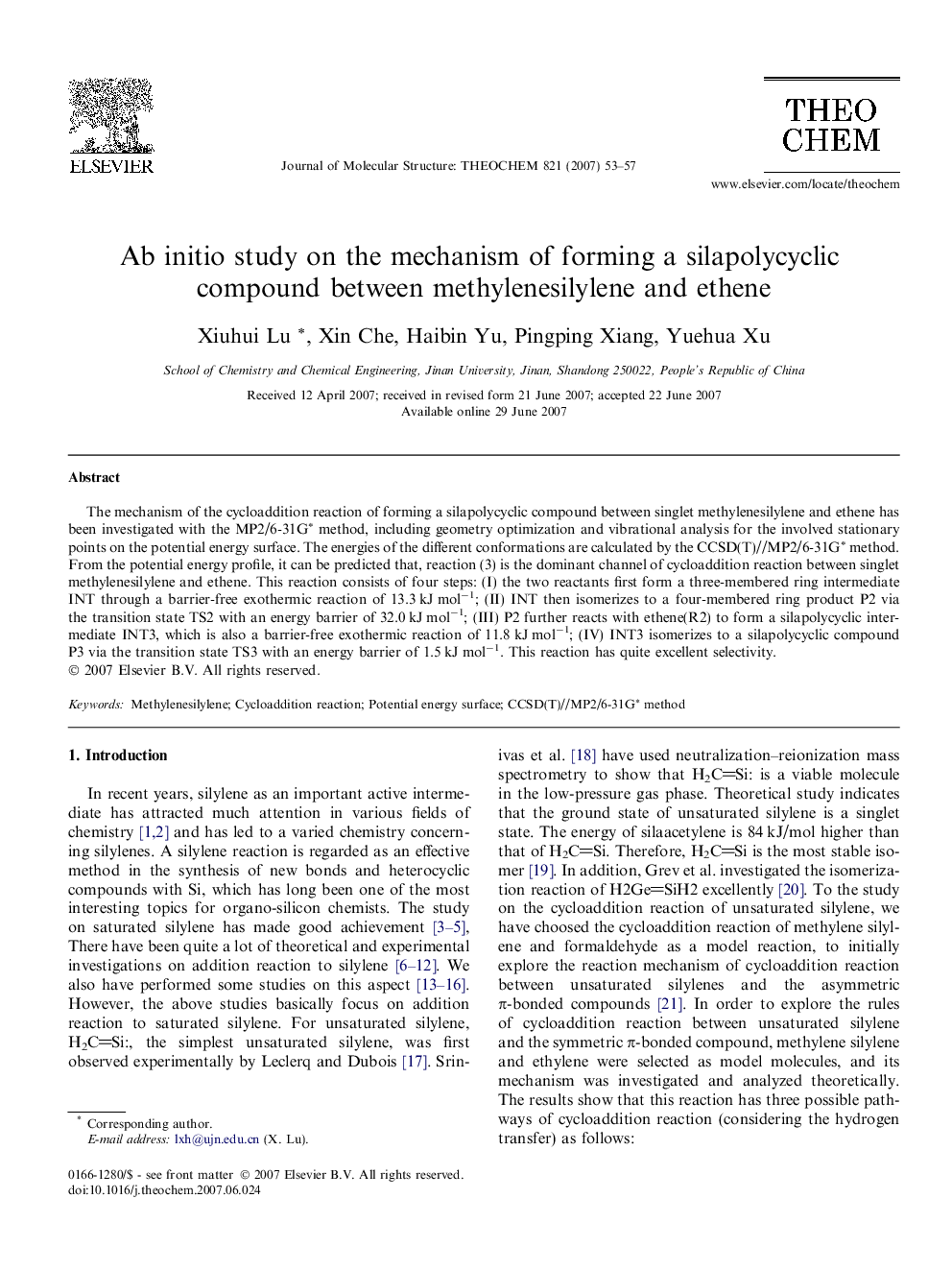| Article ID | Journal | Published Year | Pages | File Type |
|---|---|---|---|---|
| 5417772 | Journal of Molecular Structure: THEOCHEM | 2007 | 5 Pages |
Abstract
The mechanism of the cycloaddition reaction of forming a silapolycyclic compound between singlet methylenesilylene and ethene has been investigated with the MP2/6-31Gâ method, including geometry optimization and vibrational analysis for the involved stationary points on the potential energy surface. The energies of the different conformations are calculated by the CCSD(T)//MP2/6-31Gâ method. From the potential energy profile, it can be predicted that, reaction (3) is the dominant channel of cycloaddition reaction between singlet methylenesilylene and ethene. This reaction consists of four steps: (I) the two reactants first form a three-membered ring intermediate INT through a barrier-free exothermic reaction of 13.3Â kJÂ molâ1; (II) INT then isomerizes to a four-membered ring product P2 via the transition state TS2 with an energy barrier of 32.0Â kJÂ molâ1; (III) P2 further reacts with ethene(R2) to form a silapolycyclic intermediate INT3, which is also a barrier-free exothermic reaction of 11.8Â kJÂ molâ1; (IV) INT3 isomerizes to a silapolycyclic compound P3 via the transition state TS3 with an energy barrier of 1.5Â kJÂ molâ1. This reaction has quite excellent selectivity.
Related Topics
Physical Sciences and Engineering
Chemistry
Physical and Theoretical Chemistry
Authors
Xiuhui Lu, Xin Che, Haibin Yu, Pingping Xiang, Yuehua Xu,
